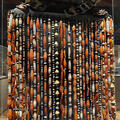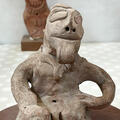Mundigak at the Guimet, Paris
A brand new slide show has just been opened featuring objects from Mundigak, a little-known Bronze Age [c. 4000-2400 BCE] set of mounds in southern Afghanistan. The objects are now at the Guimet, the French National Museum of Asian Art in Paris. Their similarity to objects and motifs in the ancient Indus Valley is remarkable. Examples include the pipal leaf, a rat trap, the humped bull, a bird whistle and classic goblets the Mundigak excavators called "brandy balloons." There is even a stone sculpture which resembles the "priest-king."
This 33 slide section Mundigak @ the Guimet is accompanied









![4. Ceremonial Hanging, Indonesia, Sumatra, Lampung [close]](https://www.harappa.com/sites/default/files/styles/square_thumbnail/public/sumatran-ship-4.jpg)
